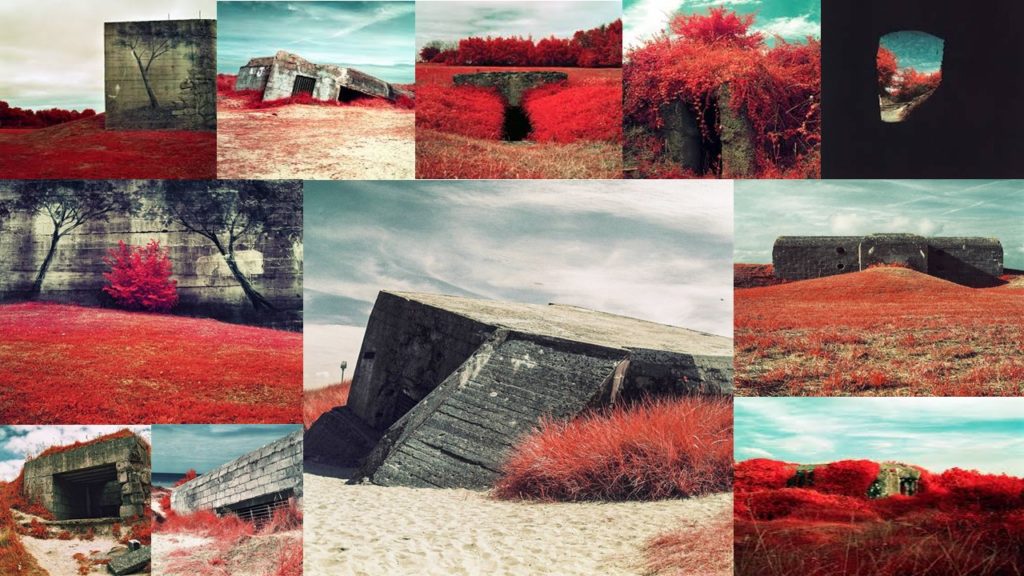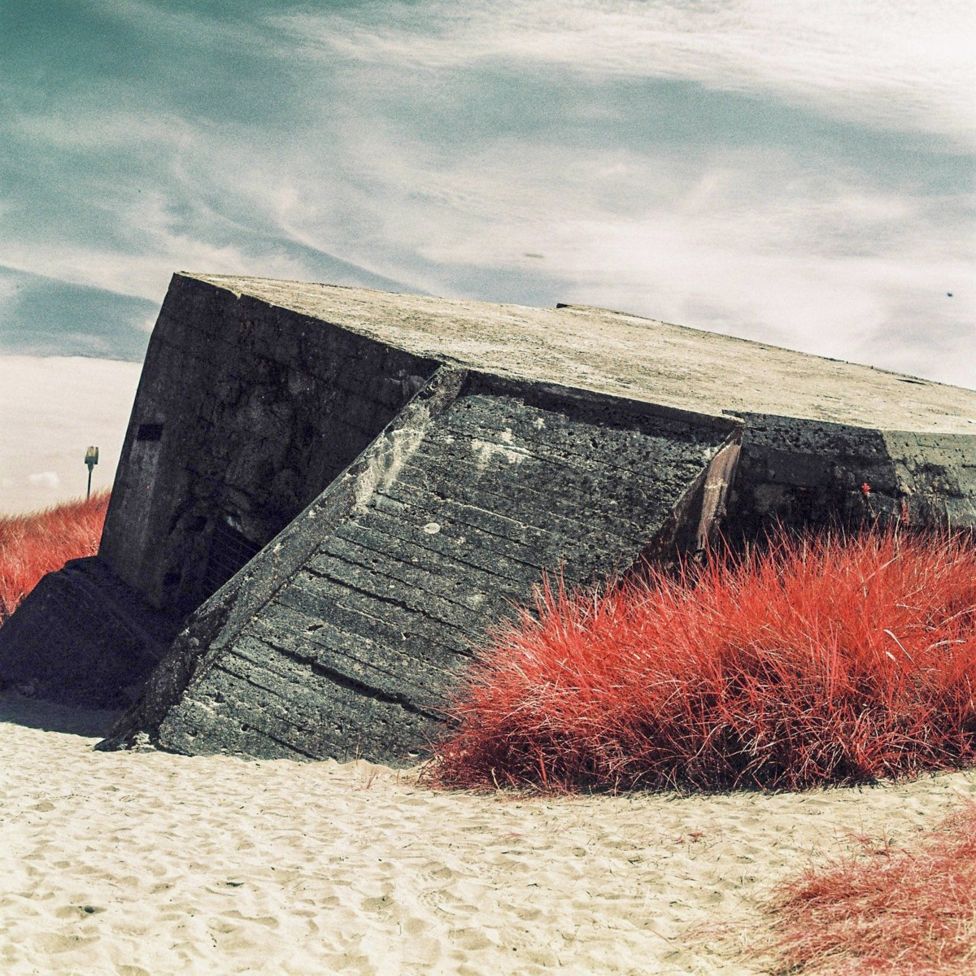In my previous studies into the bunkers of Jersey, I researched the artists Jonathon Andrew and Paul Virilio, in order to get an understanding of different ways on how to capture and edit my images of bunkers. This work can be found here:
https://hautlieucreative.co.uk/photo19ase/2019/03/13/artist-research-paul-virilio-jonathan-andrew/
To further my research I will now be analyzing Lynda Laird’s photographs who captures bunker archaeology in color. Her work shows similarity with the two artists researched above but also is very different and unique which presents the bunker’s in new and interesting way.
Lynda Laird:

Lynda Laird is a British based photographer who usually works on longitudinal projects focusing on capturing landscapes, and enjoys working with the idea that the subject holds a memory at that specific moment in time, trying to bring history back to life. Laird studied documentary photography and photo journalism at university, which lead her to also using archival images within her work. In addition, her photographic work has won many awards such as Planche (s) contact Festival, Deauville, selected artist residency, 2017 and has also exhibited her work on many occasions.

The image above is apart of Laird’s photographic series ‘Dans Le Noir’, which in English is translated to ‘In The Dark’. The photographic series captures coastal surveillance bunkers which are apart of the Atlantic wall located along the coast of Normandy. Contextually, the photographs were inspired by an air-raid which took place in Normandy during the second world war. This story is outlined on Laird’s website https://lynda-qbha.format.com/dans-le-noir . In addition to this, another contextual factor she also showcased was the use of infrared film, created by the military during world war 2 in order to detect camouflage and expose visual spectrum which is invisible to the naked eye, using this to capture her subject allows a beauty to be presented to the bunkers. As mentioned before the subject of the image above is a bunker used during the second world war. The image presents the formal elements of texture, line, shape and pattern which is shown through the bunker and the nature around it. The image also clearly presents a clear tonal contrast due to the shadows and lighting on the bunker. The main focus point of the image is the bunker itself, which is reinforced by a narrow depth of field and the light coming from directly on top of the bunker. The background of this photograph is plain and simplistic, it showcases the sky and some of the nature surrounding the bunker, allowing our attention to begin on the bunker and then take in the background. Technically, the lighting used is natural due to the subject being a structure located outdoors. It seems to be a bright sunlight, taken at just past midday as the shadow of the bunker is being reflected on the left hand side of the frame. The aperture used is likely to be low as a lot of light is being presented in the photograph, which also allows the depth of field to be narrow. The shutter speed is quick and the ISO is low as there is no intended blur being presented within the imagery. Moreover, the white balance used creates warm atmosphere. As mentioned before these camera settings almost present the beauty of the bunkers even though the contextual factors behind the series is negative, creating a clear juxtaposition making it interesting to view. Conceptually, Laird is trying to showcase the horrible historical factors of the bunkers and their uses during the war, but also showcasing how they have been neglected and the beauty and nature is almost claiming back the land.
Action Plan:
As an action plan I want to conduct photo shoots where I will capture Jersey’s bunker’s which were used during the occupation of Jersey. I will look at capturing images in the style of Laird, looking at how the bunkers hold memories, and Virilio and Andrew’s. When it comes to editing the photographs I will look at the use of color and black and white edits in order to produce imagery which is clearly inspired by the two artists, as well as exploring with different elements on light room.
